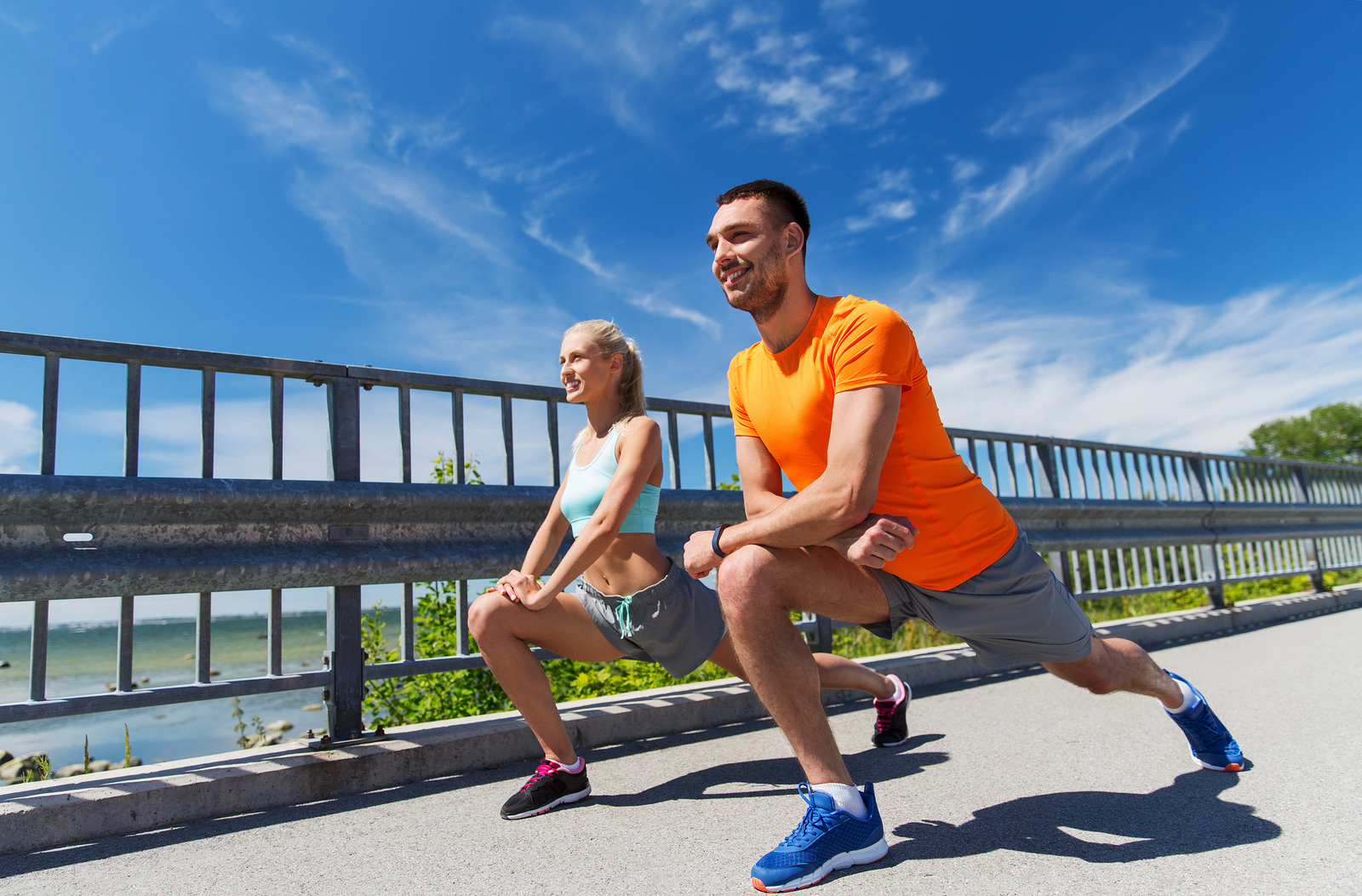Guide to Stretching
Introduction
Welcome to ProActive Physical Therapy’s resource for Stretching.
It is hard to ‘stretch’ your mind around the hundreds of ways to stretch your body. Whether you are stretching to accelerate the healing of an injury or to become more flexible, stretching is an integral part of keeping the body fit and healthy. However, you may be asking yourself, “what is the best way to stretch, and what are the most important factors to remember while stretching?” This article will provide tips and practical advice to help you stretch better. If you have a specific injury you are dealing with or a certain area you believe needs extra stretching, you should schedule a session with your Physical Therapist at ProActive Physical Therapy to get an individualized assessment and personalized guidance on the best stretching program for you. Remember, just because something feels tight doesn’t necessarily mean it needs to be stretched! Working with a Physical Therapist helps ensure that you are stretching safely and efficiently. It is also important to understand how the body responds to different stretching styles, such as static and dynamic stretching.
For years, athletes of all levels have performed long, static stretches before starting their workout or participating in an event. However, there is overwhelming evidence that currently shows static stretches do not reduce the incidence of injuries and may actually be slightly harmful instead of helpful to the athlete when performed prior to exercise! In addition, instead of helping the body perform better for the impending exercise, static stretches that are held for extended periods have been shown to activate a reflex that inhibits the muscles' ability to fire. The reason this occurs is because static stretches involve extending muscles to the furthest point and then holding the static position for a certain amount of time. This may overextend the muscles and make it harder for them to properly extend and contract during exercise, a problem that is similar to overstretching an elastic rubber band. In some cases, people cannot perform as well as they expected after performing static exercises because their muscles lose some of their elasticity. For instance, an athlete may not be able to jump as high as anticipated following static stretching. Based on these observations, it is now suggested that to prepare the body for muscular performance and to avoid injury, the combination of a general body warm-up, a neuromuscular warm-up, and dynamic stretches—rather than static-type stretches—is more beneficial.
Benefits of Warming Up
Warming up your body before exercise should consist of exactly that—warming up! Performing a general body warm-up for about 5-10 minutes to get your core temperature up and blood flowing to your muscles is essential for improving muscle performance. Depending on what activity you are about to engage in, a brisk walk, several jumping jacks, or riding a stationary bike may do the trick. In addition, tuck jumps, skipping rope, running in place, or engaging in any other cardiovascular activity you enjoy can also help warm up the body. However, it is important to avoid letting the body cool down once it is warmed up. Cooling the body down should not take place until after the workout is complete. If, for some reason, there is a moment of inactivity during your exercise routine, take a few minutes to warm up your body again (e.g., jumping jacks or running in place) before continuing your workout.
Neuromuscular Warm-Up
What Is a Neuromuscular Warm-Up?
There has been a lot of talk about neuromuscular warm-ups over the past few years, but what exactly does it mean? A neuromuscular warm-up focuses on priming the nerve–muscle connection so that both structures are ready to be properly activated during the activity you are about to engage in. Neuromuscular activities—as part of a warm-up—turn on the neuromuscular connections in your body. This is a method of getting your ‘head in the game’ by activating the brain’s connection to your joints and muscles. This process helps reinforce signals that ensure ideal muscle activation to maximize your performance. Furthermore, neuromuscular activities improve your body’s internal coordination and help muscles fire at just the right time to most effectively support the body. In addition to performing a general warm-up, regularly warming up the nerve–muscle connection can significantly reduce the chances of being injured during vigorous activity. Neuromuscular warm-up activities should include balance exercises, agility-type movements, jumping and landing techniques, stability exercises, and eccentric strengthening exercises. This type of warm-up can be done before, after, or between dynamic stretches. Your Physical Therapist at ProActive Physical Therapy can teach you the best neuromuscular warm-up activities for your individual situation.
Dynamic Stretching
The Importance of Performing Dynamic Stretches
Dynamic stretches incorporate full-body movements to prepare the muscles, joints, and tissues for the repetitive motions of the activity you are about to engage in. These types of stretches typically mimic the movements that will be performed during the workout routine or sporting event.
Examples of dynamic stretches for the upper extremities include arm swings across the body or wide arm circles. For the lower extremities, side-to-side leg swings or swinging the legs back and forth are helpful stretches. Performing simulated movements of the impending sport or activity is also encouraged. For example, a golfer could simulate a swing several times (with or without a club), a runner may jog in place at different speeds, or a swimmer could practice some strokes lying over an exercise ball poolside. It is helpful to think of dynamic stretches as ‘mini rehearsals’ for the main event!

Some important points to remember when performing dynamic stretches include:
- Warm up your body first, then start doing dynamic stretches while your muscles are still warm, and do not let your body cool down before engaging in the task at hand.
- Move through your range of motion, keeping control of the movement with your muscles. Do not allow momentum to control the movement by "flinging" or "throwing" your body parts around.
- You may feel light resistance in your muscles, but you should never feel pain during the stretch.
- Start with slow, low-intensity movements, and gradually progress to full-speed movements through your range of motion. Complete these actions in several repetitions (10-15 times).
Static Stretching
Although static stretches were commonly recommended in the past, there is overwhelming evidence to refute the use of static stretches as part of your warm-up activity. Previously, static stretches were thought to increase the actual length of muscle fibers, improve athletic performance, and reduce the risk of injuries if they were performed prior to vigorous activity, but evidence does not support these long-standing claims. Despite the current claims regarding problems associated with these types of stretches, static stretching continues to be incorporated into many warm-up regimens, and they are still recommended by many sports and health professionals to help prevent injuries. This leads to the next question—when are static stretches useful, and how are they helpful?
Understanding When to Perform Static Stretches
Static stretches can be useful as part of your cool-down routine or part of a rehabilitation program to improve recovery from an injury or enhance your flexibility. If you are dealing with an injury, the stimulation from a static stretch may help smoothen rough scar tissue and promote heightened tensile strength in tissues as they heal. In addition, static stretching may assist recovery from a specific injury by allowing you to tolerate greater ranges of movement over time. The same improvement may occur if you are trying to increase your flexibility. Interestingly, although it may feel like you are increasing the length of your muscle fibers and tendons when you hold a position statically, current evidence suggests that this may not be the case. The improvement in range of motion that is often observed over time is not actually due to increased muscle fiber length but may be attributed to a newfound ability to tolerate the stretch sensation at further end points.

Here are some important points to remember when performing static stretches:
- If the purpose of stretching is to increase flexibility, be sure to stretch while your muscles are still warm.
- Slowly stretch your muscles to the end of their range of motion. You will feel slight resistance in your muscles, but you should never feel pain during a stretch.
- Hold the stretch in a static position. Do not bounce.
- Maintain each stretch for about 20-30 seconds. Repeat each stretch 2-3 times.
Another key point to remember is that static stretching after exercise has not been shown to prevent the post-exercise soreness that may develop 1-2 days after an intense exercise session. Warming up as recommended may have a small effect on how sore you feel after a couple of days, but the best way to reduce this soreness is to perform static stretches slowly and progressively. This means that you should gradually increase your workout intensity over a specific time frame and maintain a good intensity to prevent fluctuations from occurring, as this may lead to recurring muscle soreness.
Summary
Stretching is an integral part of keeping your body fit and healthy. Incorporating the recommended tips to maximize the effectiveness of your stretching can help decrease your chances of experiencing an injury and, if needed, improve your flexibility.
Don’t forget that if you have any specific stretching needs, it is best to consult your
Physical Therapist at ProActive Physical Therapy to avoid stretching beyond your limits! Your Physical Therapist can assist you with warming up and stretching in a manner that best suits your individual situation. This helps ensure that you are getting the most out of your stretching regimen.